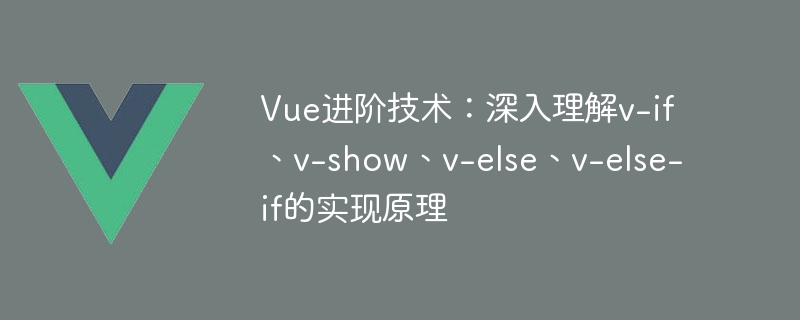

Vue advanced technology: in-depth understanding of the implementation principles of v-if, v-show, v-else, v-else-if, specific code examples are required
In Vue, v-if, v-show, v-else and v-else-if are commonly used conditional rendering instructions. They can control the display and hiding of elements based on conditions. Although these instructions are common in development, their implementation principles are not very clear. This article will deeply analyze the implementation principles of v-if, v-show, v-else and v-else-if, and give specific code examples.
1. The implementation principle of v-if
v-if is a conditional rendering instruction, which determines whether to render an element or component based on conditions. When the condition is true, the corresponding element or component is rendered; when the condition is false, the corresponding element or component is not rendered. The implementation principle of v-if is as follows:
Code example:
Hello World!
In the above code example, when show is true, render "
2. The implementation principle of v-show
v-show is also a conditional rendering instruction. It has a similar function to v-if and can control the display and hiding of elements based on conditions. The difference is that v-show does not destroy the element, but controls the display and hiding of the element by modifying the element's display attribute.
The implementation principle of v-show is as follows:
Code example:
Hello World!
In the above code example, when show is true, the element is displayed by setting "display: block"; when show is false, by setting "display: none" to hide the element.
3. Implementation principles of v-else and v-else-if
v-else and v-else-if are supplementary instructions of v-if. They can be used after v-if. Use For handling multiple conditions.
The implementation principles of v-else and v-else-if are as follows:
Code example:
优秀
及格
不及格
In the above code example, according to the value of score, the corresponding content is displayed through v-if, v-else-if and v-else.
To sum up, v-if, v-show, v-else and v-else-if are commonly used conditional rendering instructions in Vue. They are essentially implemented by controlling the display and hiding of elements. of. An in-depth understanding of their implementation principles will help us better use and optimize Vue's conditional rendering function.
The above is the detailed content of Vue advanced technology: in-depth understanding of the implementation principles of v-if, v-show, v-else, v-else-if. For more information, please follow other related articles on the PHP Chinese website!




